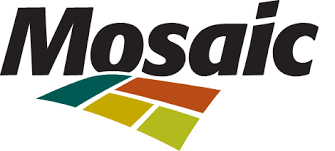NIO, Inc. is striving for profitability amid expansion and innovation challenges. Despite growth in deliveries and margins, high R&D costs, competition, and economic risks persist.
NIO, Inc. (NYSE: NIO): Navigating Growth, Profitability Challenges, and Valuation Insights
Introduction
NIO, Inc. (NYSE: NIO) has made headlines for its impressive growth trajectory in the electric vehicle (EV) market, but the company remains unprofitable as it focuses on expansion and technological innovation. This comprehensive analysis will delve into NIO's current performance, profitability outlook, and valuation metrics, providing a holistic view of its position in the EV industry.
1. Revenue Growth from Vehicle Deliveries
NIO’s growth is primarily driven by a substantial increase in vehicle deliveries. In Q2 2024, the company reported delivering over 57,000 vehicles, a significant year-over-year increase that underscores its expanding market presence. The company has provided optimistic guidance for Q3 2024, expecting to deliver between 61,000 and 63,000 units. As NIO continues to scale production and enhance its offerings, this revenue growth will be crucial for covering operating costs and moving towards profitability.
The impressive delivery numbers reflect strong consumer demand and NIO’s successful execution of its growth strategy. However, sustaining this momentum is vital for long-term profitability. The company’s ability to maintain or even accelerate delivery growth will play a key role in its path to becoming profitable.
2. Improving Margins
NIO has made notable strides in improving its margins. In Q2 2024, the company achieved a gross margin of 9.7% and a vehicle margin of 12.2%. These improvements are indicative of better cost control and a higher share of premium model sales. As NIO continues to optimize its production processes and achieve economies of scale, further margin improvements are anticipated.
Higher margins mean that NIO can generate more profit from each vehicle sold, which is essential for improving overall profitability. The company’s focus on enhancing operational efficiency and reducing costs will be crucial as it works towards achieving positive net margins.
3. High R&D and Expansion Costs
Despite the positive margin improvements, NIO’s profitability is hindered by significant investments in research and development (R&D) and global expansion. The company is heavily investing in autonomous driving technology, battery innovation, and smart vehicle systems. Additionally, NIO is expanding its footprint into international markets, particularly in Europe.
These investments are critical for long-term growth and maintaining a competitive edge, but they also weigh on short-term profitability. The high costs associated with R&D and expansion are expected to continue impacting NIO’s bottom line until the company can scale its operations and generate sufficient revenue to offset these expenses.
4. Battery Technology and the BaaS Model
NIO’s Battery-as-a-Service (BaaS) model is an innovative approach that could contribute significantly to future profitability. The BaaS model allows customers to lease batteries instead of purchasing them outright, thereby reducing the upfront cost of vehicles and attracting more buyers. This subscription-based model has the potential to provide a steady stream of recurring revenue, which could improve NIO’s financial performance over time.
The success of the BaaS model will depend on customer adoption rates and the company’s ability to manage and scale this service efficiently. If NIO can expand its BaaS offerings and attract a substantial number of subscribers, it could enhance its revenue stability and support profitability.
5. Operating Leverage
As NIO scales its operations and increases vehicle sales, it will benefit from operating leverage. This means that as revenue grows, fixed costs such as administrative expenses and factory overheads will have a reduced impact on the company’s profitability. Achieving economies of scale in production, distribution, and technology development will be essential for improving profitability.
Operating leverage can help NIO achieve better financial performance by spreading fixed costs over a larger revenue base. This will be particularly important as the company works to scale its operations and drive revenue growth.
6. Government Support and Incentives
NIO has benefitted from Chinese government subsidies and incentives aimed at promoting EV adoption. These policies have helped reduce costs for consumers and indirectly supported NIO’s revenue growth. However, the potential phase-out or reduction of subsidies could impact the company’s pricing power and margins in the future.
Continued government support in China, as well as potential incentives in international markets, will be crucial for NIO’s profitability outlook. The company’s ability to navigate changes in government policies and adapt its strategies accordingly will play a significant role in its long-term financial performance.
7. Challenges to Profitability
-
High Competition: NIO faces intense competition from both domestic Chinese automakers like BYD, Xpeng, and Li Auto, as well as international brands such as Tesla, Volkswagen, and BMW. This competitive pressure could affect NIO’s pricing strategies, margins, and market share, making it more challenging to achieve profitability.
-
Supply Chain Risks: The EV industry is susceptible to supply chain disruptions, particularly regarding key components like batteries and semiconductors. Any significant disruptions or cost increases in these areas could hinder NIO’s ability to reduce costs and achieve profitability.
-
Economic Headwinds: Macroeconomic factors such as slowing consumer demand, rising interest rates, or trade barriers could negatively impact NIO’s revenue growth and profitability. Economic slowdowns in key markets like China or globally could pose risks to the company’s financial performance.
8. Profitability Timeline
Analysts project that NIO could achieve profitability by 2025 or 2026, assuming the company continues to scale its operations, improve margins, and increase vehicle deliveries. This timeline is contingent on various factors, including ongoing revenue growth, cost management, and the success of international expansion efforts.
NIO’s management has not provided a specific timeline for achieving profitability, but the company’s focus on improving margins and scaling operations suggests that it is working towards this goal. Investors will closely monitor NIO’s progress and ability to balance growth with cost control to assess its likelihood of achieving profitability within the projected timeframe.
Conclusion
NIO, Inc. is navigating a complex path to profitability as it continues to expand its operations and invest in technological innovation. While the company has shown significant growth in vehicle deliveries and margin improvements, it faces challenges related to high R&D and expansion costs, intense competition, supply chain risks, and economic headwinds.
The innovative Battery-as-a-Service model and the benefits of operating leverage are positive factors that could contribute to NIO’s future profitability. However, the company’s ability to manage costs, achieve economies of scale, and adapt to changing market conditions will be crucial for its long-term financial performance.
Investors will need to carefully evaluate NIO’s growth prospects, competitive position, and financial health to determine the company’s potential for achieving profitability. With projections indicating a possible path to profitability by 2025 or 2026, NIO’s journey will be closely watched as it strives to balance growth with financial stability.
Independent Analysis & No Investment Advice EstimatedStocks AB is an independent financial research platform. This publication is ...
Author
The Editorial Team at estimatedstocks.com is a dedicated group of financial market analysts, researchers, and writers committed to providing accurate, timely, and insightful content for investors and financial enthusiasts. With a deep understanding of global markets, macroeconomic trends, and investment strategies, the team at estimatedstocks.com ensures that readers are well-informed to make smart financial decisions. Our editorial team specializes in analyzing stock performance, market trends, and economic indicators, offering expert commentary and in-depth reports on the ever-evolving world of finance. We aim to bridge the gap between complex financial data and practical investment insights, making the markets accessible to everyone—from seasoned investors to those just starting their financial journey. At estimatedstocks.com, our content is driven by thorough research, critical analysis, and a commitment to delivering objective, fact-based reports. Whether it’s stock market forecasts, company earnings reviews, or sector-specific deep dives, the Editorial Team is focused on helping our audience navigate the financial landscape with confidence. Our mission is to empower investors by providing them with the tools and knowledge to make informed decisions in an unpredictable market.


